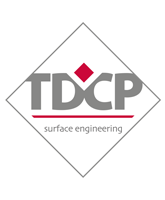ANODISING
The anodising process converts the aluminium into an aluminium oxide. The main processes in use for the anodic oxidation of aluminium employ solutions of sulphuric acid or chromic acid. Anodising increases resistance to wear & abrasion, corrosion and provides a better surface for adhesion of paints and adhesives than bare metal. It also can help prevent galling of threaded components and acts as an electrical insulator. Anodising can also be dyed various colours, please contact TDCP with your requirements.
CHROMIC ANODISING
This forms a grey film on the surface of the metal. This process gives good corrosion resistance and some increased wear and abrasion resistance but not as good as sulphuric and hard anodising. The coating provides an ideal substrate for application of paint primers and adhesives. Because chromic acid is not corrosive to aluminium, chromic anodising is the preferred anodising for assemblies and complicated parts where electrolytes may become entrapped, subsequently promoting corrosion. Unlike other types of anodising fatigue strength of the base material is not compromised. For the above reasons this coating is widely used in the aerospace industry. This very thin oxide coating does not produce good results if subsequently dyed.
SULPHURIC ANODISING
On most alloys sulphuric anodising largely retains the appearance of the substrate after anodising. This process gives the metal good corrosion, wear and abrasion resistance. It is commonly dyed to a variety of colours to improve the cosmetic looks. It is the most commonly used form of anodising working well on most alloys.
THIN FILM SULPHURIC ANODISING
Often used as a replacement for chromic anodising where a designer doesn’t want to use chromic acid. As the name suggests this thin layer of standard sulphuric anodising that produces many of the same properties as chromic anodising. It is therefore primarily used to provide corrosion resistance where fatigue strength may other wise be a compromised if a thicker coating were applied, and as a substrate for subsequent application of paint and adhesives.
HARD ANODISING
Using sulphuric acid, colder temperatures and much more power, this anodising producing much thicker, harder and darker anodic films with excellent wear and corrosion resistance. This anodising produces a dark grey to black coloured films on the surface of the metal. For maximum wear resistance these coatings are left unsealed.
SEALING
At Tewkesbury (DC) Plating we offer a variety of seals to suit our customers needs including; hot water, sodium dichromate, nickel acetate and an environmentally friendly cold nickel seal. Please contact us to discuss your requirements.
If you have any questions or wish to contact us, either give us call on
+44 (0) 1684 292 132
or come see us in Tewkesbury.
Contact us
 Tewkesbury (Diamond Chrome) Plating
Tewkesbury (Diamond Chrome) Plating